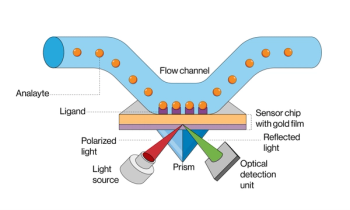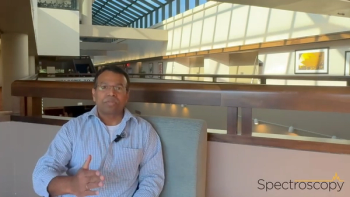
The Advantages of Raman Spectroscopy Over Biodosimetric Methods
As part of our coverage of the SciX Conference, Spectroscopy sat down with Witte, a graduate student at The Ohio State University, to talk about how machine learning (ML) algorithms can differentiate between spectral features associated with radiation dose and those reflecting temporal changes post-exposure, as well as the benefits of using Raman spectroscopy to detect and quantify radiation-induced molecular changes.
The annual SciX Conference gives aspiring researchers and graduate researchers an opportunity to gain visibility for the work that they are conducting. Yesterday, Spencer Witte, a graduate student at The Ohio State University, delivered a presentation titled, “Biodosimetric Assessment of Neutron Exposed Murine Hair by Raman Spectroscopy” (1). Witte explored using Raman spectroscopy to assess radiation exposure by analyzing changes in hair keratin following neutron irradiation. He described how as part of the study, male and female C57BL/6 mice were exposed to doses up to 4 Gy and monitored over time, with Raman spectra collected from hair bulbs at multiple timepoints (1). The application of machine learning (ML) models, which included partial least squares (PLS), random forest (RF), and support vector machine (SVM), helped predict dose and time post-exposure, achieving dose-response errors as low as 0.7 Gy (1). The findings reveal temporal spectral changes in hair keratin, highlighting Raman spectroscopy’s potential for retrospective biodosimetry after radiation exposure.
As part of our coverage of the SciX Conference, Spectroscopy sat down with Witte to talk about his research. In the below video segment, Witte addresses how machine learning (ML) algorithms can differentiate between spectral features associated with radiation dose and those reflecting temporal changes post-exposure, as well as the benefits of using Raman spectroscopy to detect and quantify radiation-induced molecular changes.
Will Wetzel, Senior Editor of Spectroscopy: What advantages does Raman spectroscopy offer over other biodosimetry methods when it comes to detecting and quantifying radiation-induced molecular changes?
Spencer Witte: Raman spectroscopy has the advantage of being a more physically oriented technique. The molecules, if they're chemically modified, we can see that response in the vibrational spectrum. Biological signals are often transient, so you can couple the physical advantage of doing something. If the chemical change has happened, we will see it with also just the sample type that we're interested in hair grows. If there's damage at an early stage in the growth, it should show up late on the fiber after a long period of growth––at least, that's how I've always sold it.
This interview clip is part of our coverage of the 2025 SciX Conference. To stay up to date with the latest coverage of the conference, click
Reference
- SciX Conference, Biodosimetric Assessment of Neutron Exposed Murine Hair by Raman Spectroscopy. SciX Conference. Available at:
https://scixconference.org/2025-final-program (accessed 2025-10-08).
Newsletter
Get essential updates on the latest spectroscopy technologies, regulatory standards, and best practices—subscribe today to Spectroscopy.





